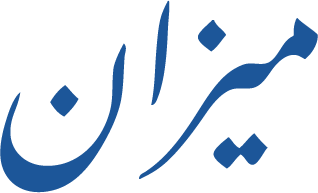PDF
Download
Citations
Click and drag then release to select a passage to cite.
Annotations
How to submit annotations to Mizan Journal articles:
your work is published.
Search within
Editor’s Introduction
Editor’s Introduction
Ambivalent authorship is a perennial in premodern literature, where interlocutors, copyists, redactors, and translators enjoyed the freedom of a great latitude in shifting perspectives, emphases, themes, and foci. In a bygone era when authors routinely drew on material drawn from unacknowledged sources and unnamed cross-cultural borrowings, the interface of ownership and agency—equal partners in the semiotics of authorship—provides a powerful lens for examining processes of signification. The papers in this issue examine fables and fabula across cultures and literary traditions to explore the manifold ways in which ambivalent or multiple authorship defined narratives and influenced broader cultures of learning.
In the first article, Olga M. Davidson examines the aetiology of Kalīla wa Dimna in Ferdowsi’s eleventh century Shāhnāma, focusing on the transference of authority from the author to the book as the vessel of salvation. Revisiting Kalīla wa Dimna as an original source is also the focus of another essay by Theodore M. Beers on the versification of Kalīla and Dimna, composed ca. 658/1260 by Aḥmad b. Maḥmūd “Qāni‘ī” Ṭūsī, and dedicated to a Saljūq sultan of Rūm, ‘Izz al-Dīn Kaykāvūs. Did Qāni‘ī Ṭūsī versify Abd Allāh b. Muqaffa‘’s eighth century Arabic translation of an alleged anonymous Pahlavi original, or did he work from an already existing Persian text? A third essay by Gregory Nagy examines the fallout from crossing generic boundaries in ancient Greek fables, when stories are narrated by hybrid and/or composite authors, and told by shapeshifting animals, humans, or even werewolves. The same question is raised in the context of Arabic and Persian literary traditions in the fourth and fifth essays. How did authors, compilers, copyists, or creative redactors legitimize authority in narratives that mix the real and the marvelous, and rest on imagined authors and fantastical characters? To that end, Beatrice Gruendler investigates the agency of copyists-cum-authors in various iterations of Kalīla wa Dimna, and Yuriko Yamanaka scrutinizes several encyclopedic compilations of curious beings and supernatural creatures.
Editor’s Introduction
Ambivalent authorship is a perennial in premodern literature, where interlocutors, copyists, redactors, and translators enjoyed the freedom of a great latitude in shifting perspectives, emphases, themes, and foci. In a bygone era when authors routinely drew on material drawn from unacknowledged sources and unnamed cross-cultural borrowings, the interface of ownership and agency—equal partners in the semiotics of authorship—provides a powerful lens for examining processes of signification. The papers in this issue examine fables and fabula across cultures and literary traditions to explore the manifold ways in which ambivalent or multiple authorship defined narratives and influenced broader cultures of learning.
In the first article, Olga M. Davidson examines the aetiology of Kalīla wa Dimna in Ferdowsi’s eleventh century Shāhnāma, focusing on the transference of authority from the author to the book as the vessel of salvation. Revisiting Kalīla wa Dimna as an original source is also the focus of another essay by Theodore M. Beers on the versification of Kalīla and Dimna, composed ca. 658/1260 by Aḥmad b. Maḥmūd “Qāni‘ī” Ṭūsī, and dedicated to a Saljūq sultan of Rūm, ‘Izz al-Dīn Kaykāvūs. Did Qāni‘ī Ṭūsī versify Abd Allāh b. Muqaffa‘’s eighth century Arabic translation of an alleged anonymous Pahlavi original, or did he work from an already existing Persian text? A third essay by Gregory Nagy examines the fallout from crossing generic boundaries in ancient Greek fables, when stories are narrated by hybrid and/or composite authors, and told by shapeshifting animals, humans, or even werewolves. The same question is raised in the context of Arabic and Persian literary traditions in the fourth and fifth essays. How did authors, compilers, copyists, or creative redactors legitimize authority in narratives that mix the real and the marvelous, and rest on imagined authors and fantastical characters? To that end, Beatrice Gruendler investigates the agency of copyists-cum-authors in various iterations of Kalīla wa Dimna, and Yuriko Yamanaka scrutinizes several encyclopedic compilations of curious beings and supernatural creatures.


